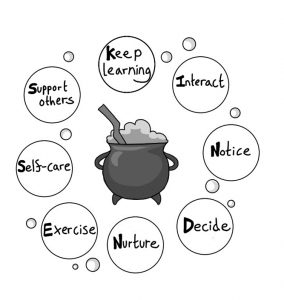This week is Mental Health Awareness Week, and this year the Mental Health Foundation’s focus is on loneliness – raising awareness of just how many of us are affected by it, the impact it can have on our mental health and, importantly, what we can do about it.
We have perhaps never needed to focus on connection more than now. A survey highlighted by the National Academy for Social Prescribing found that while the majority of people interviewed said it is important for their mental health to feel connected to their community, more than half said they are now taking part in fewer social activities than they did before the pandemic.
We can all admit to having felt lonely at some point. What can trigger it? It may be external influences such as a relationship breakdown, bereavement, dysfunctional friendship, moving location or a change in role personally or professionally.
But there is also an internal aspect to loneliness that we don’t speak about much: not spending time understanding who we are, not living a life aligned to our own unique self, ignoring our need for time on our own and for space to get to know ourselves.
And this is because loneliness is not always the same as being alone. Loneliness is the feeling you get when you don’t feel connected – to others, to yourself, to the world. When you don’t feel heard, valued, listened to or seen, or when you don’t recognise any part of yourself within others, when you feel no one cares about or understands you.
Why does loneliness cause us so much hurt? Ultimately, because our need for connection is innate in us. Way before the pandemic, the statistics about how many of us felt lonely were staggering, and the ripples are still being felt. What we have to ensure is that the conversation that started getting more prominence around loneliness during the pandemic not only continues, but actually gets acted upon – through connection.
Find out more using the link below:
https://mentalhealth-uk.org/get-involved/mental-health-awareness-days/mental-health-awareness-week/



